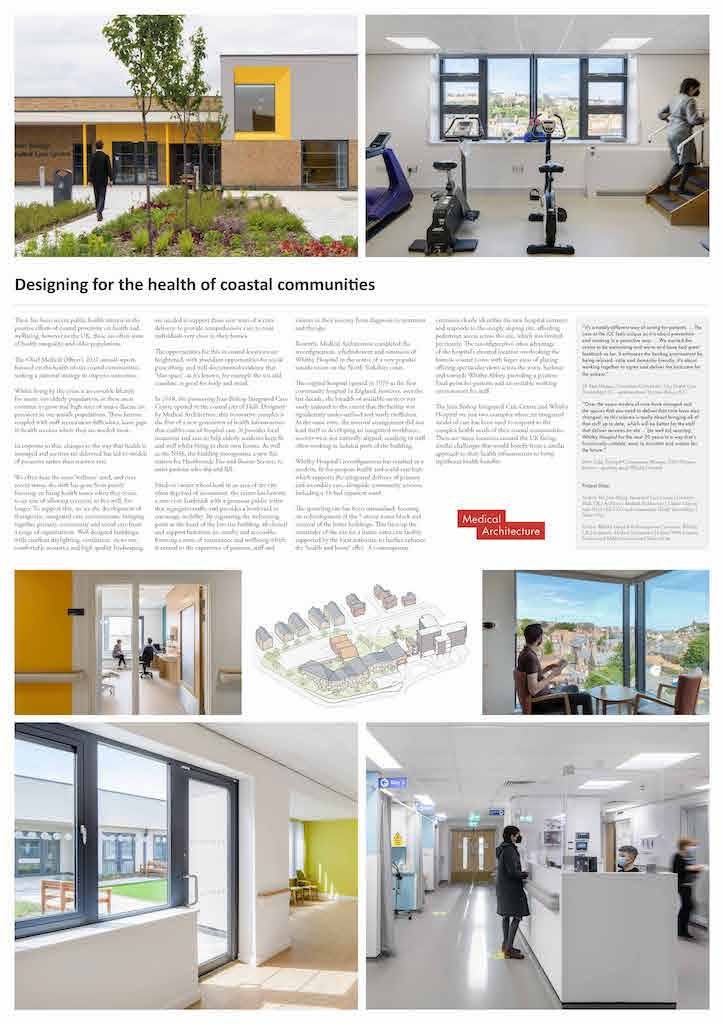Healthcare / Service redesign
European Healthcare Design 2022
Designing for the health of coastal communities
By SALUS User Experience Team | 04 Oct 2022 | 0
This poster will explore the changes that can be made to the way that health is managed and delivered to enable health and social care to operate together to support wellbeing, rather than responding to accident and illness.
Abstract
In 2020, more than one-fifth (20.6 per cent) of the EU population was aged 65 and over, a 3-per-cent increase over the decade. And this trend is expected to continue, with this age group predicted to account for 31.3 per cent of the EU’s population by 2100.
Hospital admissions in the UK and across Europe are, as a result, steadily increasing year on year, with a good proportion of these represented by elderly people who rely on continuing care. In parallel with this trend, England’s chief medical officer has signalled that the country needs a national strategy to tackle health inequalities for seaside towns. Coastal towns often have older populations with more complex health needs, but historical planning has often underprovided for these areas. Heart disease, strokes, mental health problems and diabetes are all more prevalent in seaside populations. At the same time, local NHS services can suffer from recruitment problems, leaving gaps in health services where they are needed most.
Objectives: This poster will explore the changes that can be made to the way that health is managed and delivered to enable health and social care to operate together to support wellbeing, rather than responding to accident and illness. This integrated care model has a strong focus on patient “wellness”, which changes the type of environment needed. Less-institutional community spaces are favoured, with therapeutic environments that provide excellent daylighting, ventilation, views, comfortable acoustics, and access to outside space.
Methodology: The presentations will explore two projects where an integrated model of care has been used to address the complex health needs of coastal towns, and discuss the design factors that are critical to their success.
Findings: The first project is the redevelopment of Whitby Hospital, which sees the adaptation of an outdated and under-utilised facility to create a health and social care hub, which supports the integrated delivery of primary care, secondary care, and community services. The redevelopment takes advantage of the hospital’s elevated location overlooking the historic coastal town of Whitby, to create an environment that aids patient recovery and instils a sense of pride among the NHS staff that work there. The second project is the pioneering Jean Bishop Integrated Care Centre in Hull, which is the first of a new class of NHS facilities to cater for the needs of an increasingly elderly population without the recourse to hospital admission. Adopting an entirely new way of delivering health services, the centre brings together a range of specialities to provide a more holistic approach to health, care, and support needs. A focus on patient experience and community integration has contributed to its success. In its opening year, the centre achieved a 10-per-cent reduction in both emergency department attendance and emergency admissions, and significant annual savings on drug costs per patient.
Conclusions: The presentation concludes by looking at the lessons that can be learnt from these examples and how the fundamental principles can be applied to the design of healthcare facilities in coastal communities across Europe.
Organisations involved


